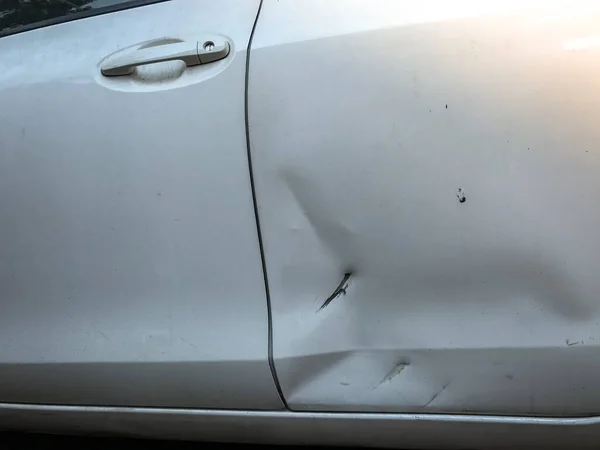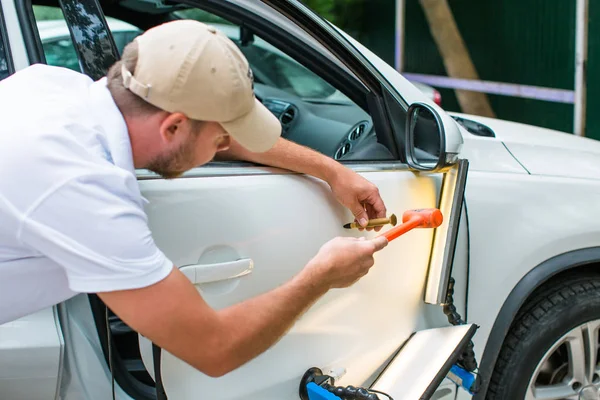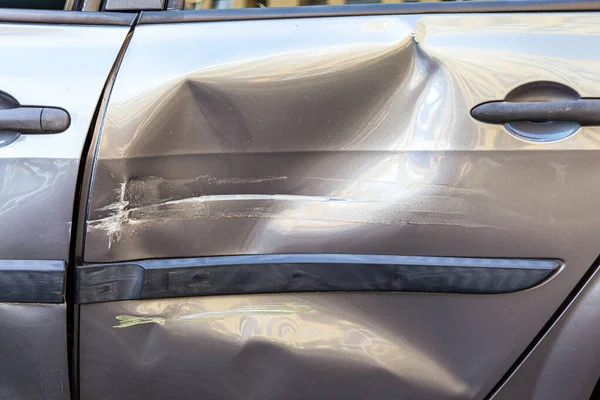Don’t Panic! Here’s Your Step-By-Step Guide To Door Ding Repair
Many vehicle owners find themselves annoyed by dings on their car doors. These minor dents, often caused by a rogue shopping cart or an inattentive driver, can mar the sleek appearance of your vehicle. However, before you consider heading to an expensive auto body shop, it’s worth noting that numerous door dings can be repaired at home using proper tools and methods. In this guide, we will provide you with a detailed walkthrough to help you rejuvenate your car's look easily and affordably.
Understanding the Impact of Door Dings
Why Door Dings Shouldn’t Be Ignored
Although door dings might appear to be merely a superficial concern, they can result in more serious complications as time goes on. If not addressed, a minor dent can turn into a breeding ground for rust, potentially jeopardizing your vehicle's structural strength. In addition to preserving its appearance, promptly repairing dings can also protect your car's resale value.
Can You Fix a Door Ding Yourself?
In brief, the answer is affirmative, but it varies based on the dent's dimensions and position. Most small to medium dents can be fixed at home with simple tools or do-it-yourself repair kits. On the other hand, larger dents or those that have caused metal creasing may need help from a professional. This guide will concentrate on minor dings suitable for DIY repair efforts.
Gather Your Tools for Door Ding Repair
Before starting, it's essential to gather some tools and materials to facilitate an effective repair. Here’s a list of what you should prepare:

Essential Tools for DIY Door Ding Repair
- Heat tools like a hairdryer or heat gun: These devices are used to warm the metal, which increases its flexibility and facilitates the process of pushing the dent back out.
- Compressed air or dry ice: Following the heating process, quickly cooling the area causes the metal to shrink, aiding in restoring it to its original form.
- Dent repair kits: Available at automotive supply shops, these kits come with suction cups or glue pullers that simplify dent removal.
- Dowel made of plastic or wood: This tool is utilized to push the dent outward from behind the panel if you can reach it.
- Microfiber cloth: Essential for wiping and safeguarding the surface while you work.
- Rubber mallet: Ideal for softly tapping the dent from within, ensuring that the adjacent metal remains undamaged.
Step-by-Step Guide to Door Ding Repair
Step 1 – Clean the Affected Area
Before starting any repair work, it's crucial to thoroughly clean the surrounding area of the dent. Utilize a gentle automotive soap mixed with water to eliminate any dirt, grease, or debris. This step guarantees a clear assessment of the damage and prevents any foreign substances from affecting the repair process.
Step 2 – Assess the Size and Location of the Ding
Dents vary significantly in terms of their characteristics. Evaluate both the dimensions and position of the dent to decide if it’s suitable for a do-it-yourself fix. Dents located near the edge of a panel or those with pronounced creases might need professional assistance. Conversely, for more rounded and smoother dents situated centrally on a panel, attempting a DIY repair is likely to be effective.
Step 3 – Heat the Dent with a Hairdryer or Heat Gun
Activate your hairdryer or heat gun and aim it at the dent, keeping it approximately 6 inches from the surface. Use a circular motion to distribute the heat evenly over the dent. It's important to warm the metal without overheating, as excessive heat can damage the paint. Continue heating the area for 2 to 5 minutes.

Step 4 – Cool the Area with Compressed Air or Dry Ice
As soon as you finish heating the dent, swiftly cool it down by either spraying it with compressed air or using dry ice. If you choose to use compressed air, make sure to hold the can upside down while applying it. This quick cooling process will lead to the contraction of the metal, and often, the dent will resolve itself spontaneously.
Step 5 – Use a Dent Repair Kit (Optional)
In cases where the heat and cooling technique doesn’t eliminate the dent, using a dent repair kit can provide further help. Be sure to adhere to the guidelines included with the kit. Generally, you will need to place a suction cup or adhesive puller at the center of the dent and carefully pull outward. Make sure not to apply excessive force, as this could harm the nearby paint or lead to an inverted dent.
Step 6 – Tap Out the Dent from the Inside (If Accessible)
If you have dents on panels that can be accessed from the inside, like the interior of a door, you can utilize a plastic or wooden dowel to push the dent out from behind. Carefully apply pressure to the center of the dent using the dowel, and slowly work your way around the edges until it becomes smooth.
Step 7 – Polish the Area
After the dent has been eliminated, take a microfiber cloth along with some car polish to bring back the luster of that section. This process aids in seamlessly integrating the repaired area with the adjacent paint, rendering the fix nearly undetectable.
Preventing Future Door Dings
Park Smartly
To minimize the chances of getting door dings in the future, it's wise to think carefully about your parking choices. Select spots that are further from high-traffic zones, steer clear of vehicles that are not parked straight, and whenever you can, take advantage of parking at the ends of rows.
Consider Door Protectors
By putting rubber edge protectors on your doors, you can minimize the likelihood of dents when opening them in cramped areas. Moreover, positioning your car next to walls or pillars on one side lowers the risk of it being struck by another vehicle. Learn about door ding repair.
When to Seek Professional Help
Although do-it-yourself techniques can effectively address many small dents, certain situations necessitate the expertise of a professional. If the dent is substantial, has creases, or is positioned along a body line, seeking professional assistance is advisable. Auto repair shops possess specialized equipment and methods, including paintless dent repair (PDR), which can restore dents without harming the vehicle's paint finish.

